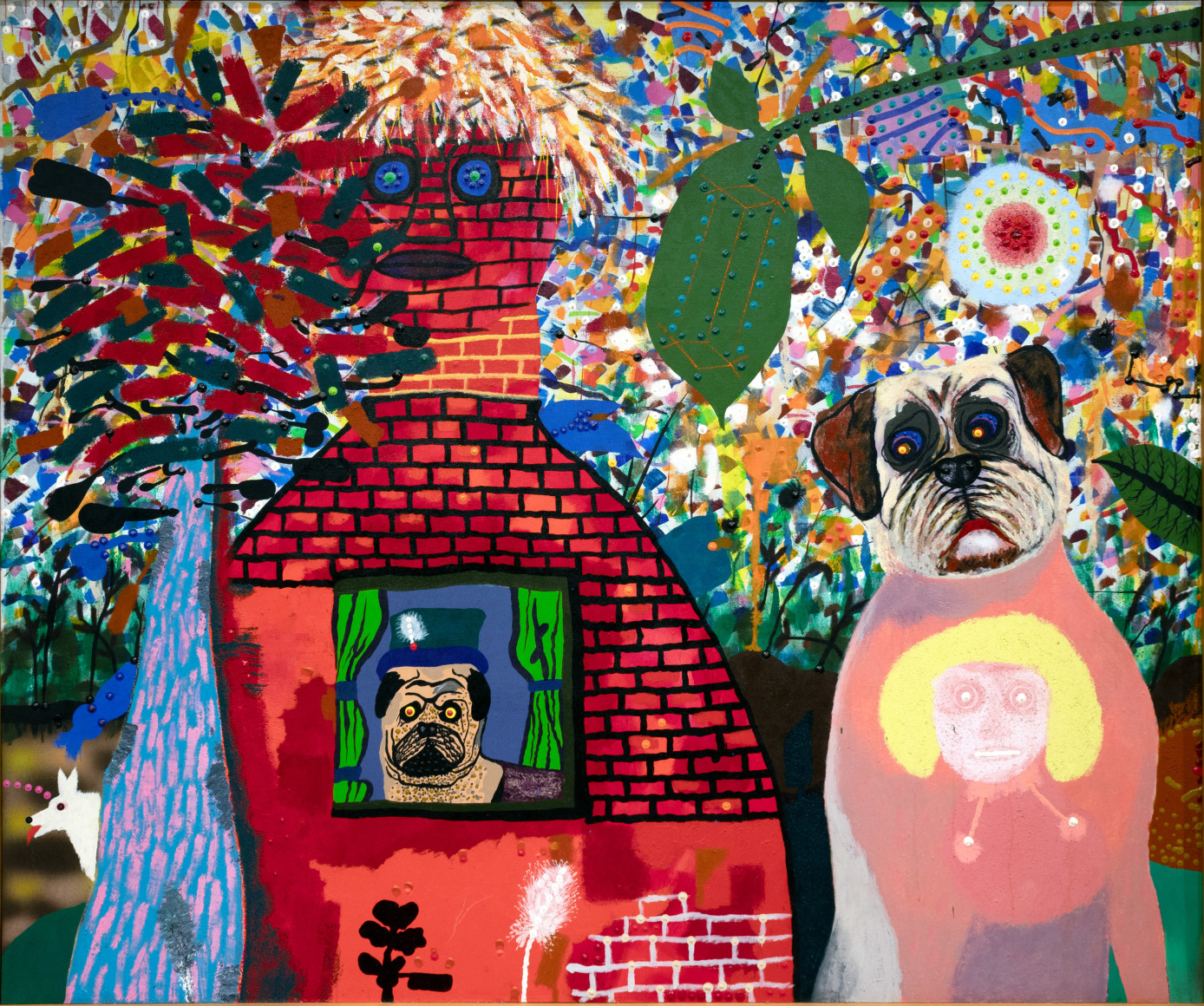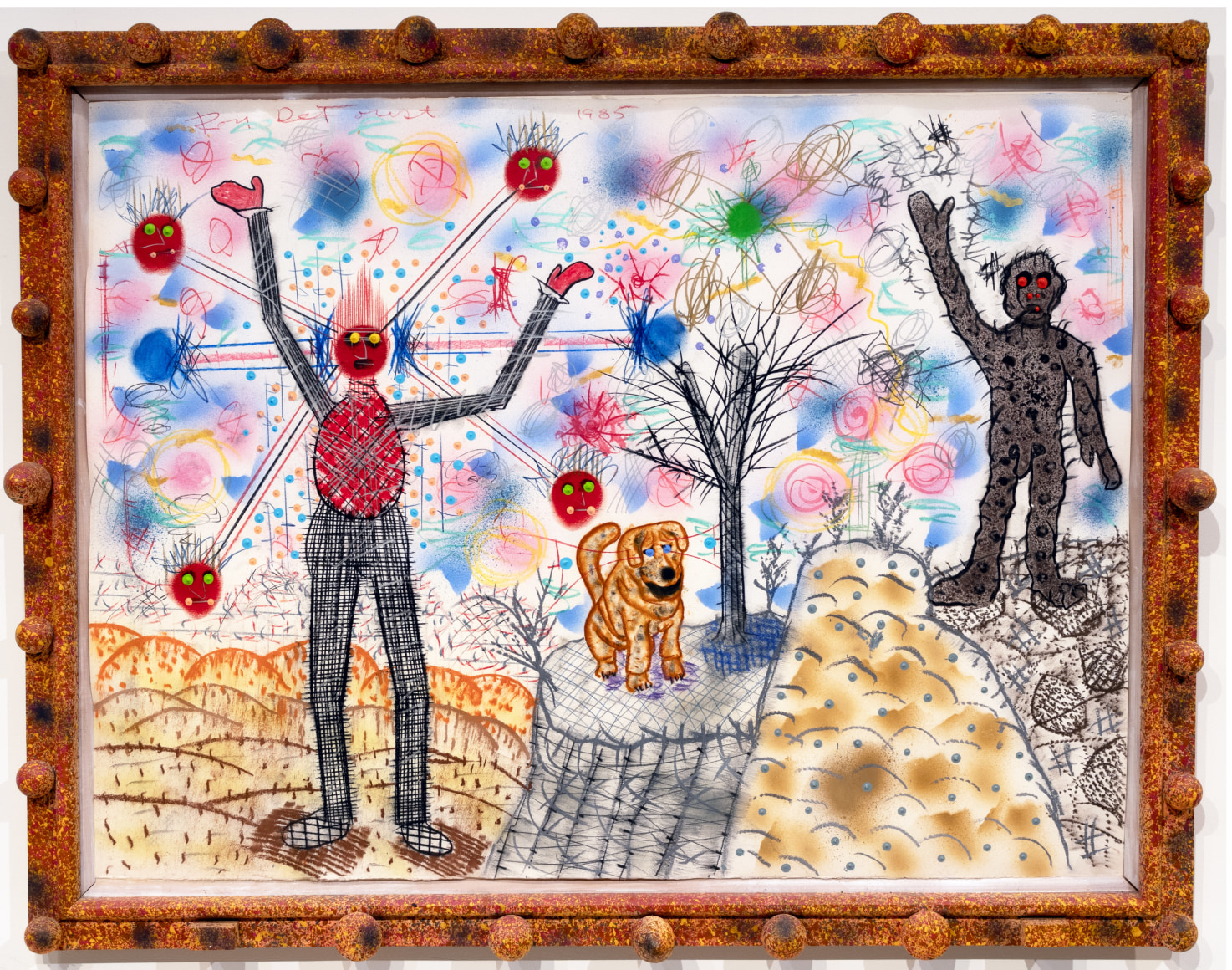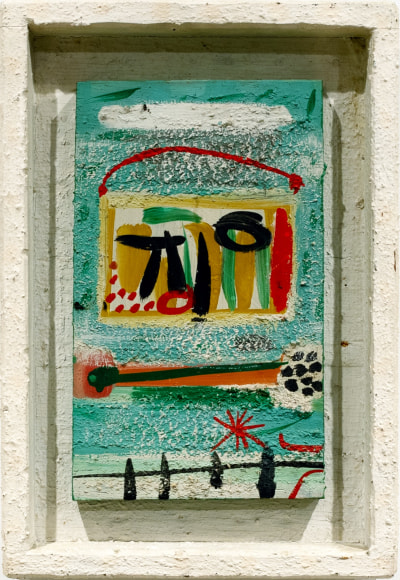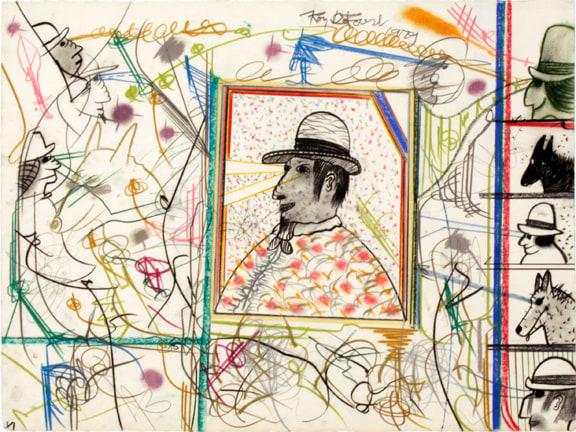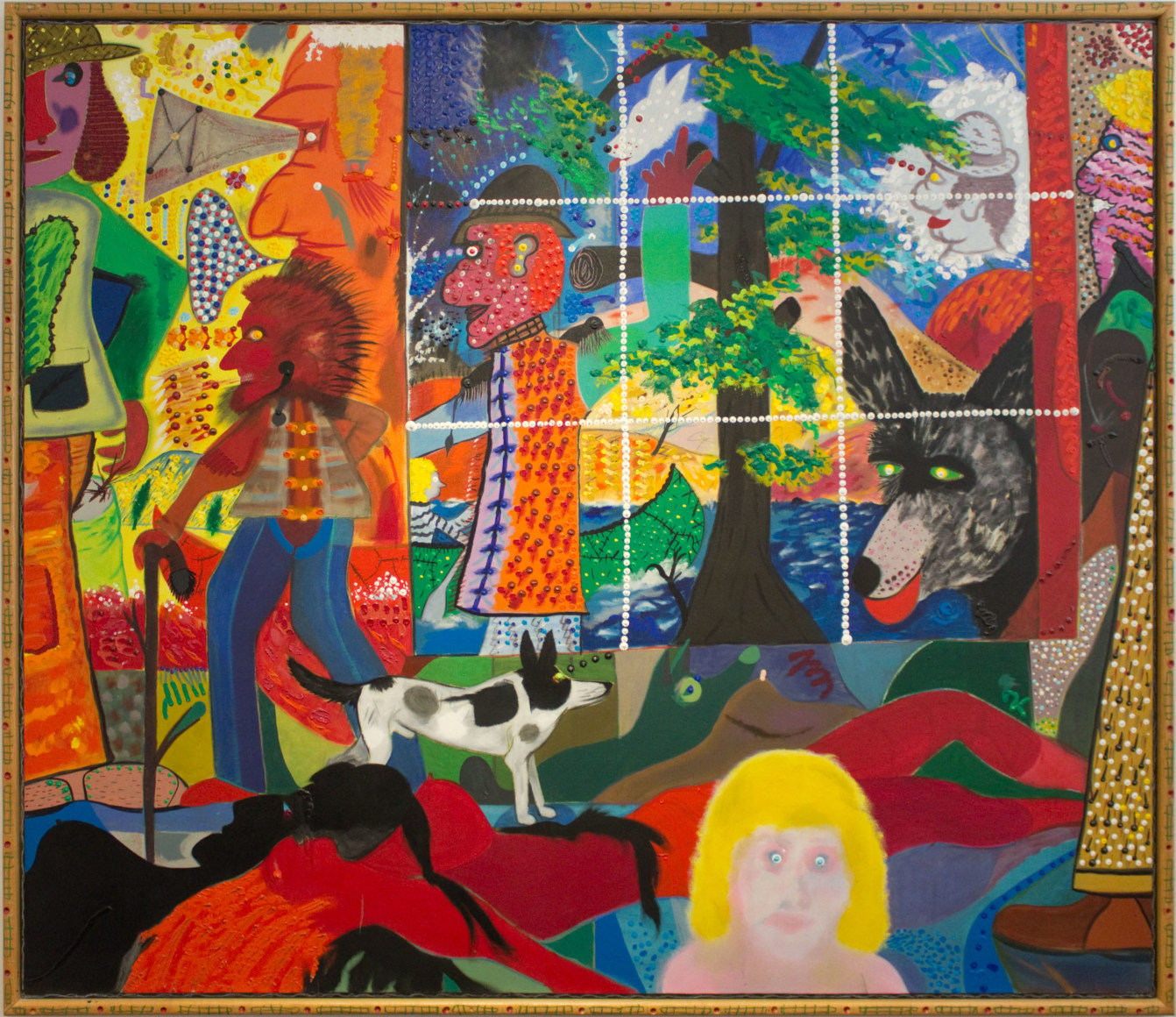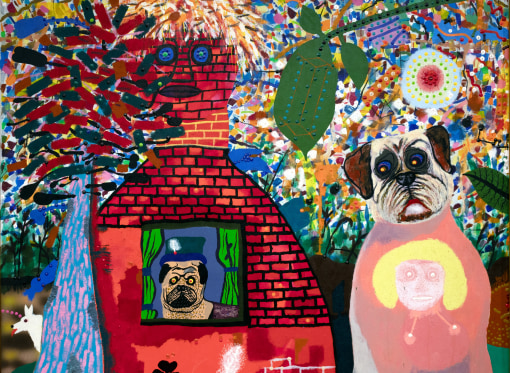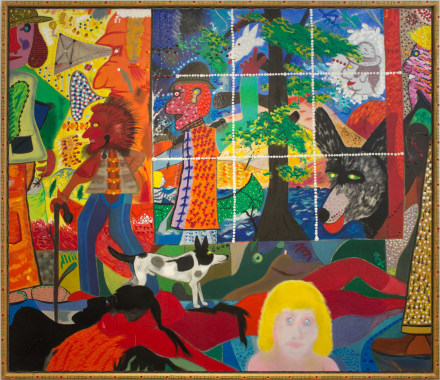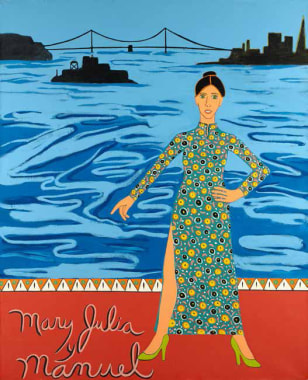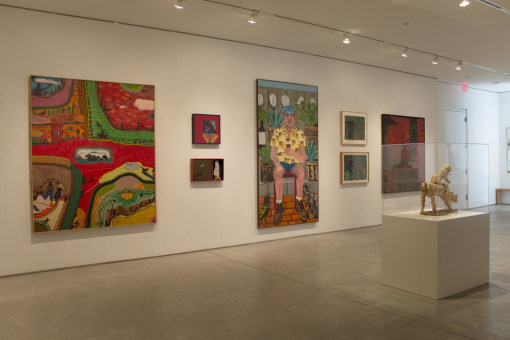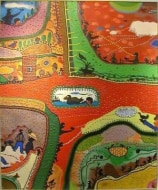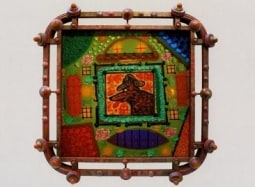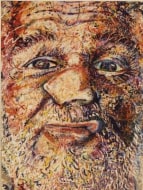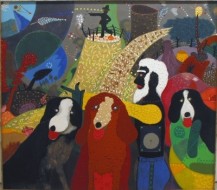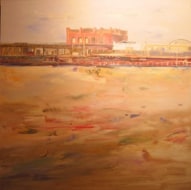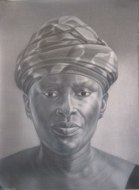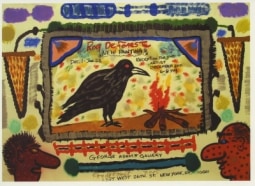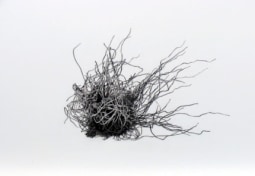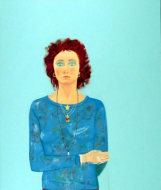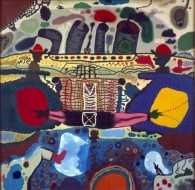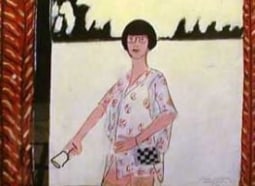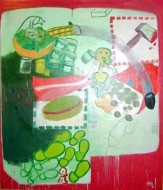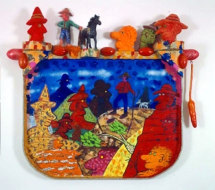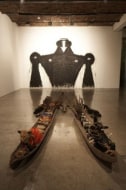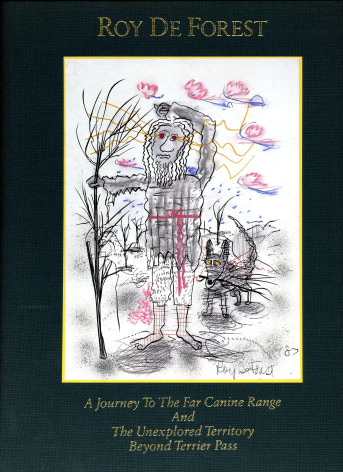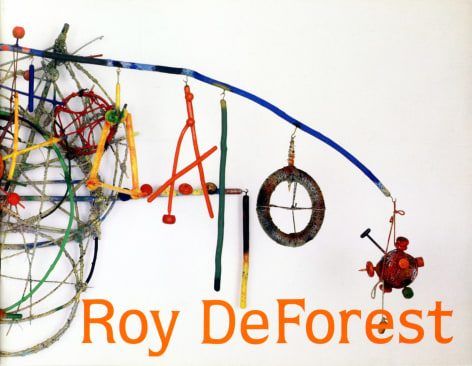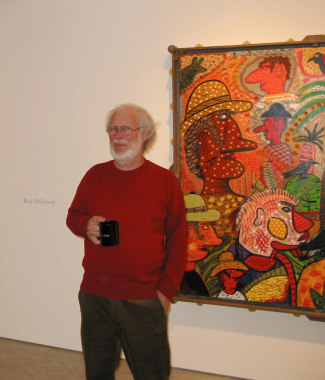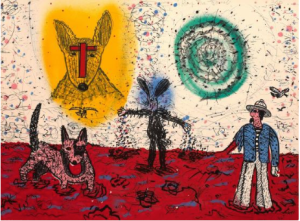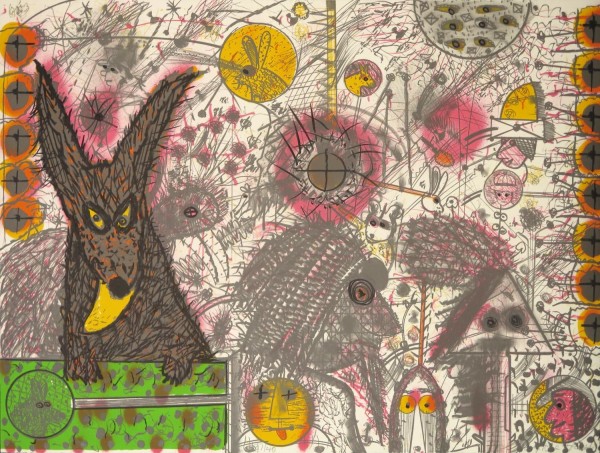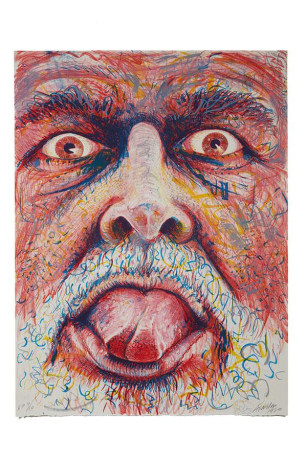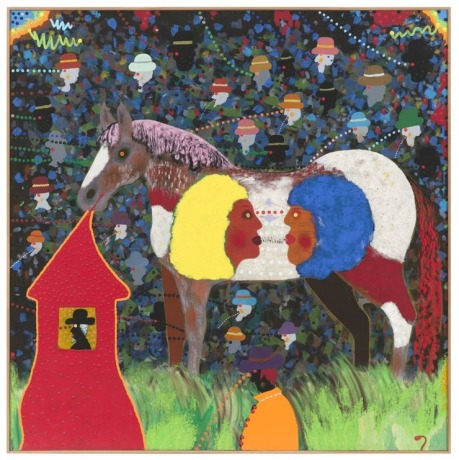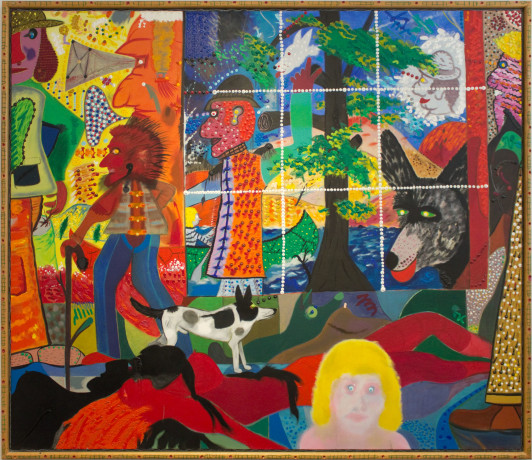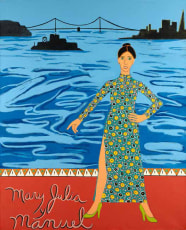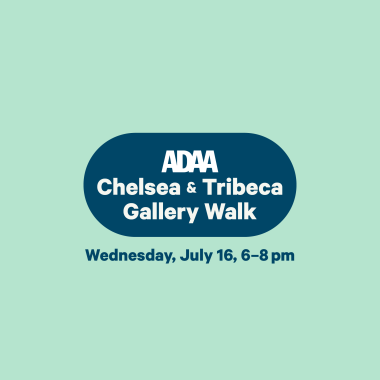
Roy De Forest was born in North Platte, Nebraska in 1930 and raised in Yakima Valley Washington. He moved to San Francisco in 1950 to attend the California School of Fine Art, where he studied with painters such as Elmer Bischoff, Edward Corbett, David Park and Hassel Smith, whose evening seminars were particularly influential to De Forest and his peers. This second generation of abstract expressionist painters included Robert Morris, Sonia Gechtoff, Seymour Locks and Deborah Remington, and formed the core of the artist-run, alternative spaces such as the Ubu Gallery and later the Six, Spasta and Batman Galleries which opened in San Francisco during the 1950s. While De Forest received his BA in 1953, he was soon drafted to serve in the Korean War, stationed in Washington as a sign painter for two years. Returning to San Francisco in 1955, he continued to work abstractly while exhibiting within the milieu of his former classmates. He received his MFA from San Francisco State University in 1956, but a work-place accident in 1958 precipitated his acceptance of a teaching position back at Yakima Junior College, his alma mater.
Returning to Washington, De Forest soon began experimenting with sculpture, painted constructions he referred to as “Boardisms.” However his adoption of mixed media and acrylics in his paintings, namely his signature raised paint dots, and more formally complex compositions indicated the direction his art would take. A love of pulp fiction and poetry alike inspired fanciful, evocative titles for his paintings and sculptures, which by 1960 were beginning to include narrative and figurative elements. It was that same year De Forest returned to the Bay Area and had his first of many exhibitions at Dilexi Gallery, the influential San Francisco venue which was instrumental in promoting the careers of many Northern California artists in the 1960s and 1970s. Over the next few years De Forest established his vibrant, collaged style and a pantheon of characters which would continue to populate his work such as brick men, devils, ships, hermits, horses, blond women and above all, dogs.
In 1965 he was hired to teach at the University of California, Davis, where close friends Robert Arneson and William T Wiley were already on the faculty. The unstructured environment and camaraderie between students and professors alike, proved inspirational for many of the artists there at the time, De Forest included. While he was included in the Funk show at the Berkeley Art Museum in 1967, it was the loose collection of artists - many affiliated with UC Davis - who coined the term “Nut Art” that was more critical to De Forest’s own identity as an artist. Envisioned as a contrarian non-style, at odds with the perceived elitism of contemporary art movements, “Nut Art” had no particular defining aesthetic beyond the individualism of the artist. Its members, who included Arneson, Clayton Bailey, Richard Shaw, David Gilhooly, David Zack and Maja Peeples-Bright, variously described their invention as “the mad genius in all of us” where “the work of a peculiar and eccentric nut can truly be called ‘nut art’.” De Forest’s own mad genius combined the grand mythology of the American West with an erudite introspection. In much of his work the narrative is that of a journey, generally over water or mountains, by boat, plane or foot. However the journey also can be a metaphorical one, of self-discovery or enlightenment; windows are a common motif, as a mediating device or a physical portal between pictorial spaces. Despite the apparently whimsical nature of his work, De Forest pulled from a wide range of sources and was well versed in art history - a long standing game with his colleague Wayne Thiebaud involved them trying to stump each other with the names of obscure artists.
De Forest called art “one of the last strongholds of magic” and described his richly colored and textured fantasy worlds as “unknowable [though] hauntingly familiar.” Despite his eccentric nature, by the early 1970s he was gaining national attention, with gallery representation in both San Francisco and New York. His first major museum show was a mid-career retrospective in 1974 at the San Francisco Museum of Art, which traveled to the Fort Worth Art Center, TX; Utah Museum of Fine Arts, Salt Lake City; and the Whitney Museum of American Art, New York. While De Forest had generally abandoned sculpture in favor of painting by this point, he did continue to fabricate increasingly elaborate frames for both his paintings and his drawings. The drawings in particular were often given highly decorative, modeled and painted frames, which grew in complexity in later years. By the early 1980s however, he once again began to experiment with sculpture, though these later pieces have more in common with his paintings than the abstract constructions of the late 1950s and early 1960s. Much of his work from the early 1990s onward is more construction than painting alone; beyond the frames themselves, there are dimensional figurative elements and his canvases tend to unorthodox shapes. His late sculpture culminated in a series of Dog Benches: cast, polychrome functional sculptures featuring, predictably, dogs. De Forest retired from Davis and teaching in 1992, though he continued to work and exhibit up until his death in 2007.
De Forest exhibited widely during his lifetime, enjoying success on both the east and west coasts. He was the subject of two major retrospectives, the first in 1974 which traveled nationally and another, posthumously in 2017, organized by the Oakland Museum of California. He was the recipient of several major grants and awards, including a National Endowment for the Arts Fellowship in 1972 and an honorary doctorate from the San Francisco Art Institute in 1983. His work can be found in major public collections internationally, including the San Francisco Museum of Modern Art; the Whitney Museum of American Art, New York; the Art Institute of Chicago; the Honolulu Museum of Art; the Philadelphia Art Museum; the Smithsonian American Art Museum, Washington, DC; Virginia Museum of Fine Arts, Richmond; and the Centre Georges Pompidou, Paris, France.

